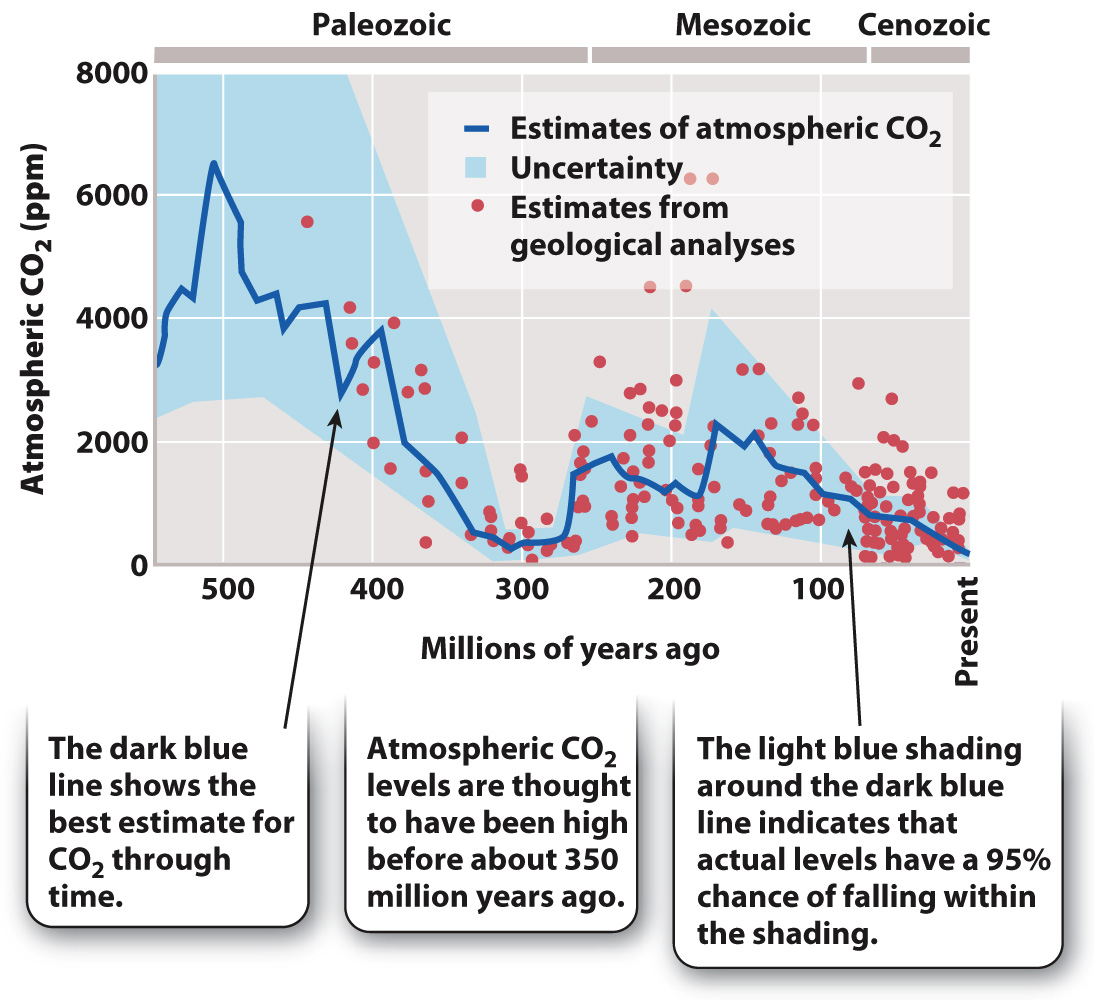Variations in atmospheric CO2 over hundreds of millions of years reflect plate tectonics and evolution.
The atmospheric record trapped in glacial ice extends back in time less than 1,000,000 years. To estimate atmospheric CO2 levels for earlier intervals of Earth history, we must rely on computer models and measurements of chemical or paleontological features of ancient rocks that are thought to reflect the levels of atmospheric CO2 at their time of formation. One substitute for direct measurements of ancient CO2 levels is the anatomy of fossil leaves: Experiments show that stomata, the small pores on leaf surfaces (Chapter 29), decrease in density as atmospheric CO2 levels increase. The chemistry of ancient soils is also thought to reflect atmospheric history. Such indirect observations and analyses come with a large degree of uncertainty, but most Earth scientists accept at least the broad pattern of atmospheric history shown in Fig. 25.11.

For the past 30 million years or so, atmospheric CO2 levels have probably not exceeded those recorded today at Mauna Loa by much (Fig. 25.11). Before that, however, higher levels of CO2—perhaps four to six times the 1958 level—
On timescales of millions of years, atmospheric CO2 and, hence, climate, are determined in large part by geologic processes: changes in the rate of organic carbon burial in sediments, continental weathering of rocks uplifted into mountains, and volcanic gas release. All these processes reflect the action of Earth’s great physical engine: plate tectonics. Seafloor formation and destruction together influence rates of volcanic gas release, and mountain formation strongly influences rates of weathering and, therefore, the fluxes of sediments that bury organic carbon beneath the seafloor.